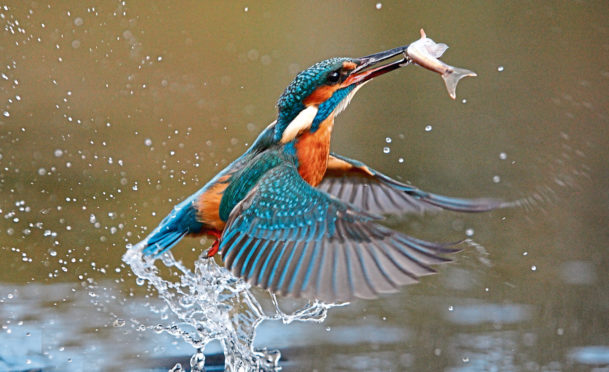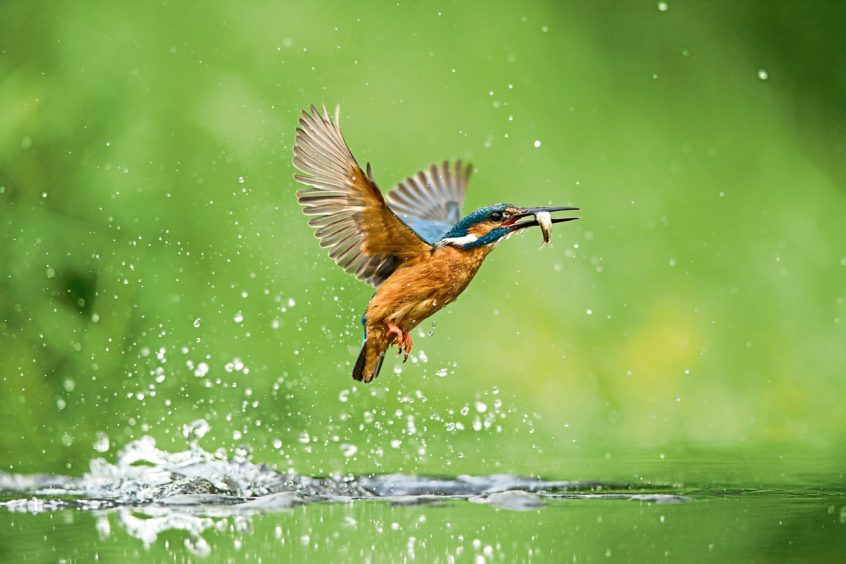Kingfishers are at the far north-western edge of their European range in Scotland, and as such, can suffer high mortalities in severe winters. They occur on rivers throughout Courier Country.
July and August are the months when much of nature falls quiet – especially the birdlife, which has dramatically reduced its singing intensity and with many species displaying a tendency to lurk unseen in amongst summer’s thick luxuriant growth as they feast upon an abundance of insects and seeds.
For me, it is a time tinged with sadness – the glossy greenness of the newly emerged leaves of spring has long dulled down and the miracle of the dawn chorus is no more. Young birds have fledged, adults are starting to moult, and fox and badger cubs have grown to a good size. The excitement of spring has dissipated and now much of our wildlife is fattening up in preparation for winter, making hay while the sun shines.
Furthermore, over the next few weeks, many of our migrant birds such as warblers, will gradually slip away as they embark upon their long journeys south to their wintering grounds in Africa. They do so unobtrusively, but in a steady flow, until one day it suddenly dawns upon me that there are no longer any warblers about. Like a magical disappearing act, they are gone; it is all a bit of a shock really, for it seems only like yesterday when the excitement of their spring arrival had set my pulse racing.
I venture down to the river to soothe such melancholy and no sooner had I alighted upon its banks, than a whistle pierces the air followed by a bolt of electric-blue as a kingfisher shoots along the course of the river. It then stalls and comes to rest on a small branch protruding out of the water.
The halcyon hadn’t seen me, so I stand ever so still, observing it closely. It plops down into the water and rises back up to its perch again, a minnow gripped firmly in its beak, then juggles the fish around so it is facing head-first down its gullet for swallowing. It executes three more plunges and each time emerges with a fish – an impressive success rate. The kingfisher then whirrs away upriver to find another fishing spot.
I creep to the bank edge and peer into the water and immediately see a shoal of minnows flashing and turning as they feed on the riverbed below. There is a stick lying beside me, so I grab it, lean further over and scrabble up the river bottom, which transforms the minnows into a feeding frenzy as they gorge upon the detritus I have stirred.
Interestingly, a few days earlier I had observed a pair of shallow wading black headed gulls employ the very same tactics as they kicked-up the pebbly bottom of the river by rhythmically stamping their feet. I assumed they were doing so to reveal caddisfly larvae and other invertebrates to eat, but after seeing how the minnows reacted, it is entirely possible that these gulls were hoping to attract small fish, which they could then eagerly snap up.












